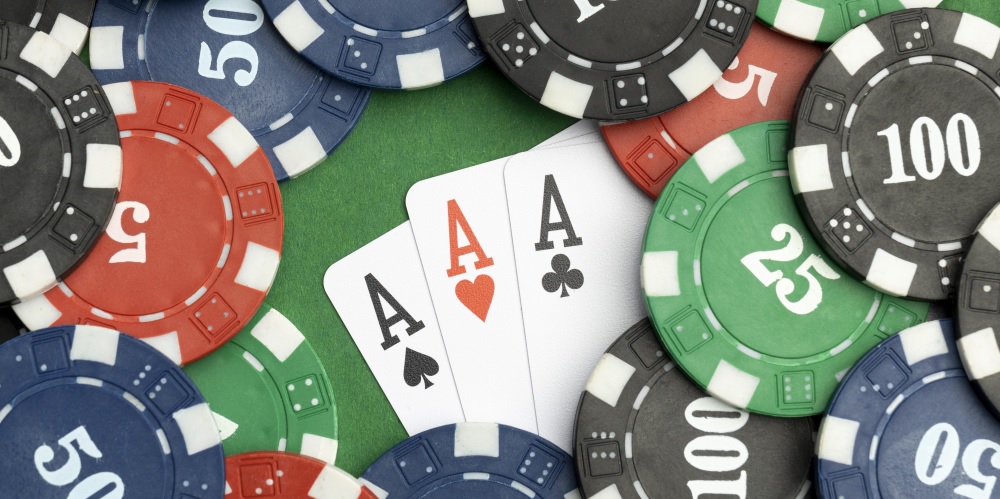Omaha poker is the most played poker variant after Texas Hold’em. It is appreciated for giving a twist to the basics of Texas Hold’em, since here a rule of proportionality is established to find the best hand. While in Hold’em, player cards and community cards can be used interchangeably to make the best hand, in Omaha poker it is necessary to use a certain number of cards of each type for the hand to be considered good.
But that does not mean that the hierarchy of hands is altered. Maybe in other games there are specific rules in this regard, but in Omaha poker the order of hands remains unchanged.
Take a look to:
Order of hands in Omaha poker

If you have taken a look at the rest of the articles in which we have talked about the hierarchy of hands and which are the strongest, you will not find a lot of surprises here because, although we are talking about different modalities, the order is the same.
So, in Omaha poker the winning hands are still the royal flush, the straight flush (you know, if we split the royal flush from the straight flush, even though they are the same hand, but with a different selection of cards), and the poker.
The order of the hands would be, therefore, in an identical way as it would be in Texas Hold’em:
- Royal Flush.
- Combination model: Aª Kª Qª Jª 10ª
- Description: also, in Omaha poker this hand is the best that can be tied. It is unbeatable, beating even a straight flush made with inferior cards. But in Omaha it is even more difficult to form it because the proportion of player and community cards must be respected.
- Colored ladder.
- Combination model: 10♦ 9♦ 8♦ 7♦ 6♦
- Description: formed with five cards of the same suit in successive order. A straight flush is considered to be any hand that complies with this rule but does not consist of the highest cards in the deck. Otherwise, it would be a Royal Flush.
- Poker.
- Combination model: Jª J♥ J♦ J♣ 4ª
- Description: the hand that gives its name to the game is formed by combining four cards of identical value and a single card, the kicker, which in case of a tie would be decisive.
- Full House.
- Combination model: Q♥ Q♦ Qª 7ª 7♥
- Description: a Full House is the hand formed with three cards of the same value, and two other cards of equivalent value. Therefore, three of a kind plus a pair.
- Color.
- Combination model: K♣ J♣ 9♣ 8♣ 3♣
- Description: in total, five cards of the same suit. Remember that it has to be compulsorily NOT consecutive. Otherwise, it would be a straight flush.
- Straight.
- Combination model: 6♥ 5♦ 4ª 3♦ 2ª
- Description: five cards of consecutive value, but of different suits.
- Three of a kind.
- Combination model: 8♦ 8♣ 8♥ 4♦ 2♣
- Description: by adding three cards of the same rank, a three of a kind can be obtained. It is accompanied by two cards of unequal value.
- Double pairs.
- Combination model: 6♣ 6♦ 5ª 5♥ 2♦
- Description: two different pairs formed with the five cards that make up the hand is how you get what is the third worst hand in poker. Here the kicker is again important in case of a tie.
- Pair.
- Combination model: K♥ Kª 6♦ 4♣ 3♦
- Description: obtained by combining two cards of equal value together with three cards that are of no use in extending the power of the hand. Second worst option to play.
- High card.
- Combination model: Jª 7♥ 5♣ 4♦ 3ª
- Description: hand that does not allow to fight for anything. When between the player’s cards and the common cards nothing has been achieved to bind, the hand is called a high card.
You can’t miss:

